You never know when you might be hit with an emergency, only to find yourself with a weak cell signal. These days, we almost expect everyone to be reachable from anywhere in the world at any time. It can be shocking when you can’t get hold of someone. But if that happens, there are ways to improve your signal on an iPhone or Android phone — it could be something as simple as changing airplane mode.
To go from dropped calls to full bars, here’s what you need to know.
Read more: iPhone 16 vs iPhone 13: What Apple changed in 3 years
note: Although the software on different iPhone models is relatively the same, Samsung Galaxy, Google Pixel and other Android phones may have different software versions, so some settings and where they are located may differ depending on the device.
For more, see how to use Google Maps when you’re offline and how to fix your internet when it’s down.
To improve your cell service, try these steps first
The settings on your phone can help you get better cell service, but there are other tricks to improve your reception without even touching your phone’s software.
- Move yourself so that there are no obstacles between your phone and any cell towers outside. This may include moving away from metal objects or concrete walls, both of which kill reception. Instead, go to a window or go outside if possible.
- Remove your phone case. It doesn’t hurt to remove whatever case you have on your phone, especially if it’s thick, so the phone’s antenna isn’t blocked by anything and gets a better signal.
- Make sure your phone is charged. Searching and connecting to a stronger signal drains power, so if your phone’s battery is already low on charge, you may struggle to get good service.
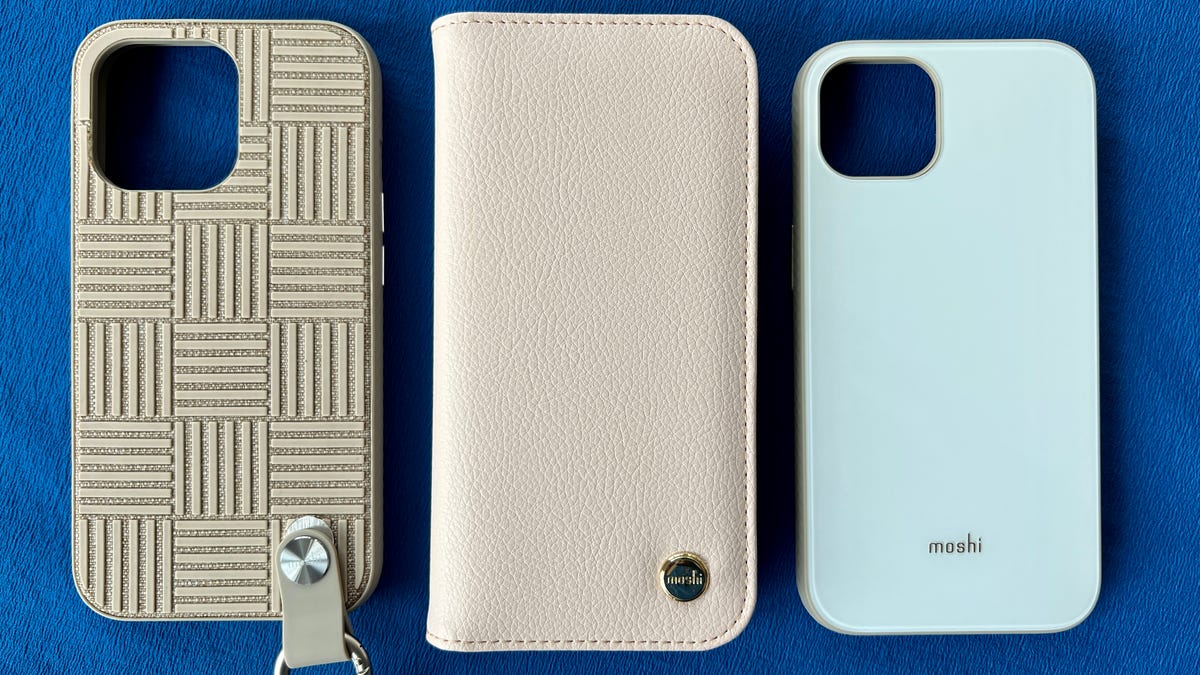
Some phone boxes cause more signal dropouts than others.
Always start by turning Airplane Mode on and off.
Disconnecting and reconnecting your phone is the fastest and easiest way to try to fix your signal problems. If you’re moving from one place to another, switching to airplane mode restarts the Wi-Fi, Bluetooth, and cellular network modems, which forces them to find the best signal in the area.
Android: Swipe down from the top of your screen — to access the Quick Settings panel — and then tap the Airplane Mode icon. Wait for your phone to completely disconnect from its Wi-Fi and cellular connections. This doesn’t happen immediately, so give it 15 seconds before tapping the Airplane Mode icon again.
iPhone: On iPhone, you can access Airplane Mode from Control Center, but this varies depending on the iPhone model you have. On iPhone X and later, swipe down from the top-right corner to access Control Center. On older iPhone models, swipe up from the bottom of the screen. Then tap the Airplane Mode icon, which will turn orange when enabled. Again, wait up to 15 seconds before turning it off.
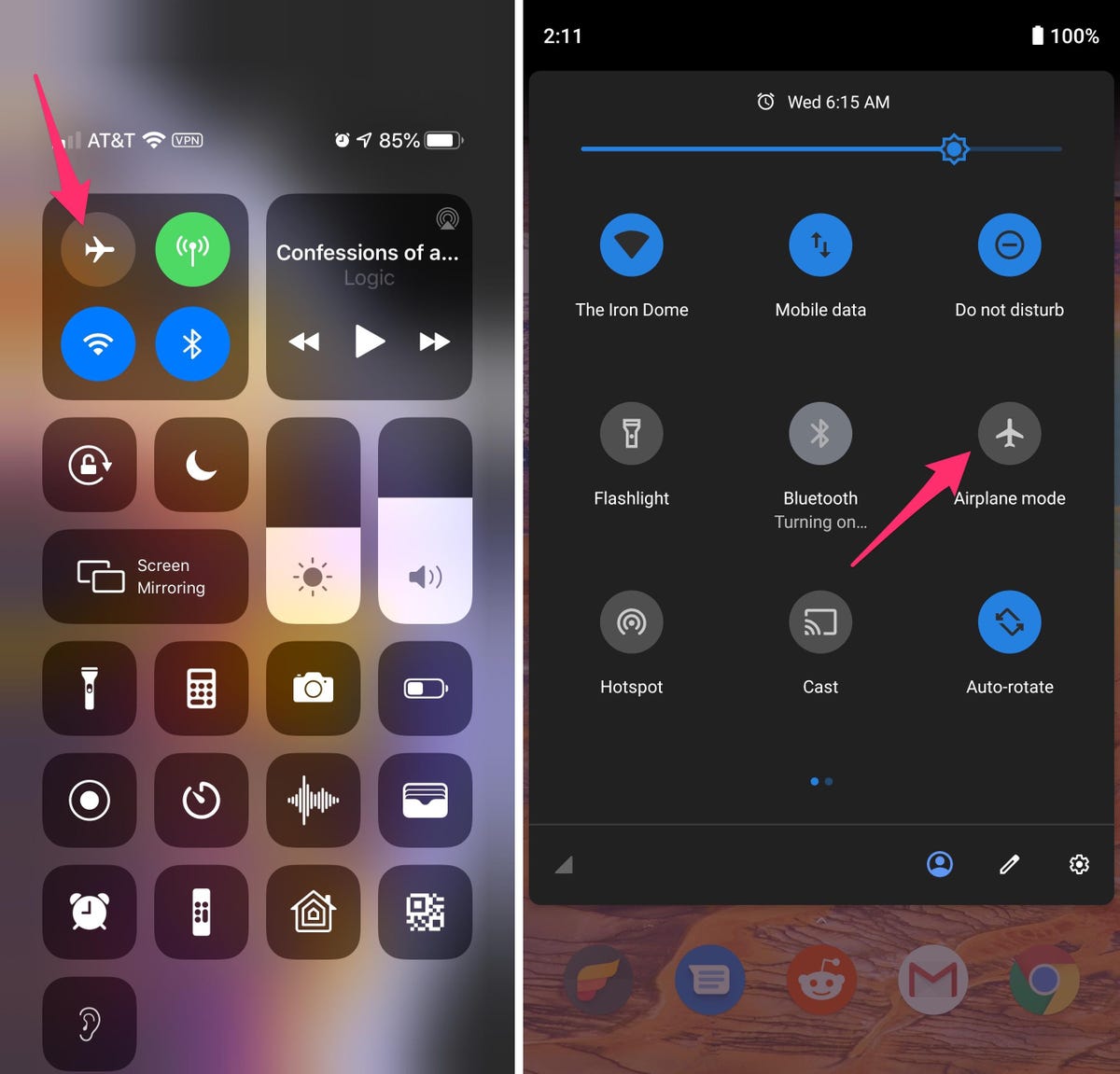
Left: Airplane mode on your iPhone. Right: Airplane mode on an Android.
If airplane mode doesn’t work, restart your phone
Our phones are miniature computers, and like computers, sometimes you can fix problems like network connectivity by simply restarting them.
Android: Press and hold the power button or the power button and the volume down button (depending on your Android phone), until the on-screen menu appears, then tap Restart. If your phone doesn’t offer a restart option, you can just tap Switching to turn off your device and then reboot it with the power button.
iPhone: On iPhone X and older models, press and hold the sleep/wake button and one of the volume buttons, then slide right on the power slider to turn off the device. Wait until it turns off completely, then press the sleep/wake button to turn it back on.
Alternatively, you can perform a hard reset on your iPhone: Press the Volume Up button, followed by the Volume Down button, and then press and hold the Side button. Keep holding it after your phone’s screen goes black and until you see the Apple logo appear again.
If your iPhone has a Home button, press and hold the Sleep/Wake button until the power slider appears, then drag the slider to the right. After the device turns off, press and hold the sleep/wake button until you see the Apple logo.
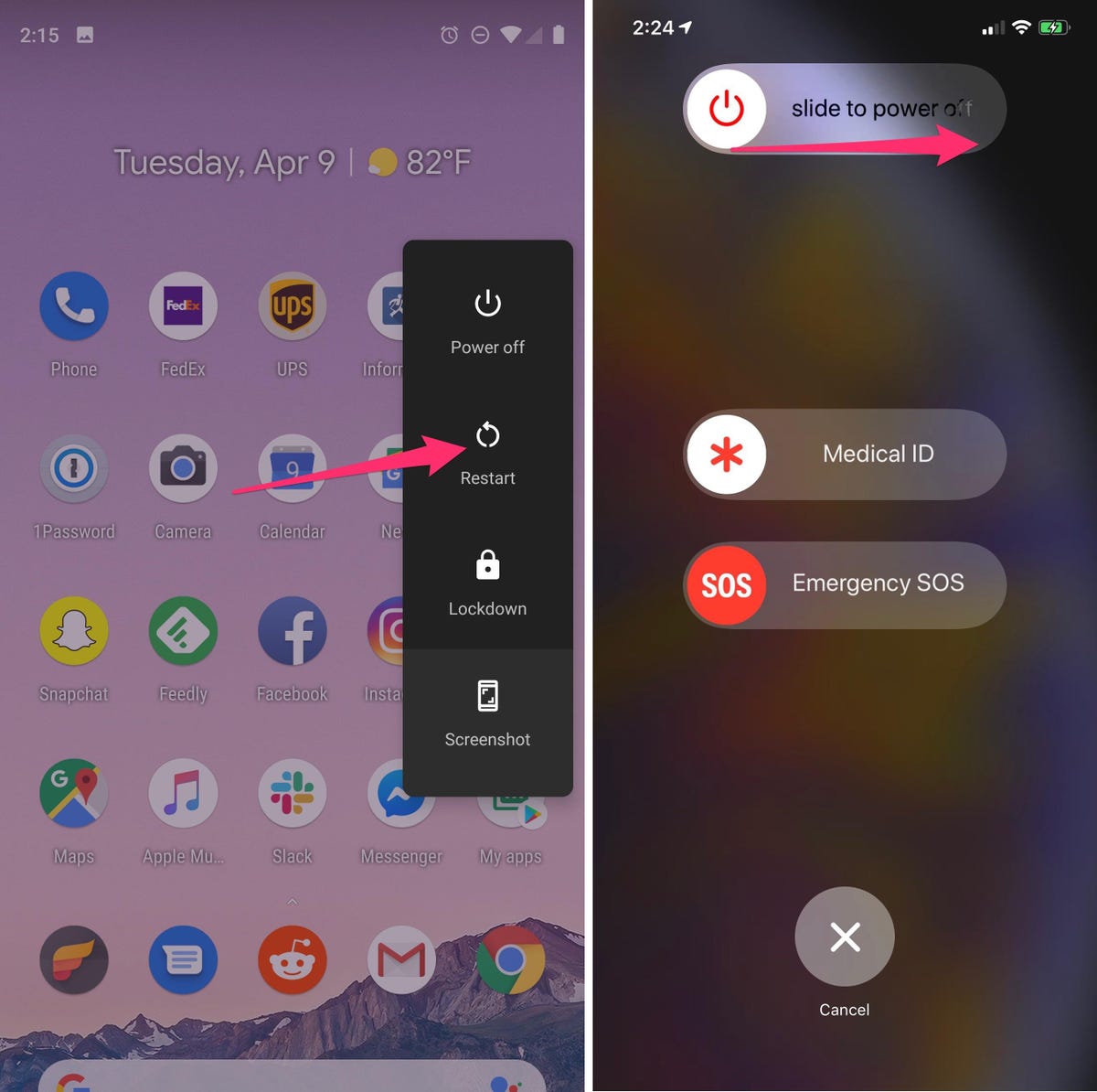
Left: Restarting an Android phone. Right: Turning off an iPhone.
Remove the SIM card from your phone
Another troubleshooting step that may help is to remove your SIM card, if your phone has one, and then put it back in with the phone turned on. If the SIM card is dirty, clean it. If there is a physical defect, you may need to replace it.
You’ll need a SIM card tool – usually included in your phone’s box – or an unfolded paper clip or sewing needle to pop the SIM tray out of your phone.
All phones: Remove the SIM card, check if it is damaged and if it is placed in the SIM tray correctly, then put it back in the phone.
TEACHINGS: For phones with an eSIM — that is, an integrated electronic SIM card on your phone — you have nothing to remove. The best you can do is restart your phone.
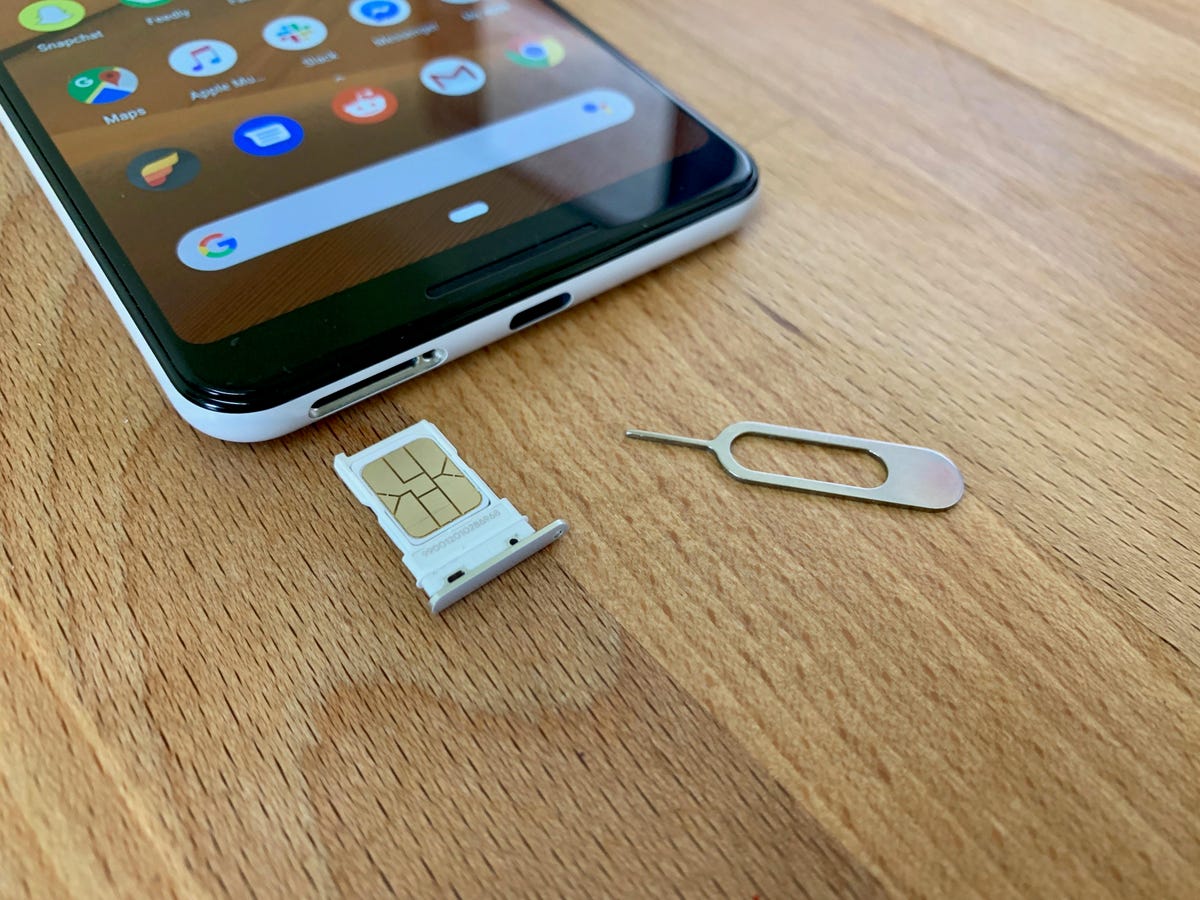
Removing and reinserting the SIM card into your phone only takes a few seconds.
Check your mobile operator settings (and update your software)
Mobile operators often send carrier settings updates to help improve connectivity for calls, data and messages on their network. Although this feature is available on all iPhone models, it’s not universal on Android, so you may not find it in your carrier settings if you don’t have a supported phone.
iPhone: Carrier updates should just pop up and you can update from the popup message that appears. To force your iPhone to check for a carrier settings update, go to SETTINGS > general > Around on your phone. If an update is available, you will be prompted to install it.
Android: As mentioned before, not all Android phones have carrier settings, so you’ll need to open the Settings app and type in Carrier Settings to find any possible updates. Under Supported Pixels, go to SETTINGS > Network and Internet > Pagetap the gear next to your carrier’s name, then tap Mobile operator settings versions.
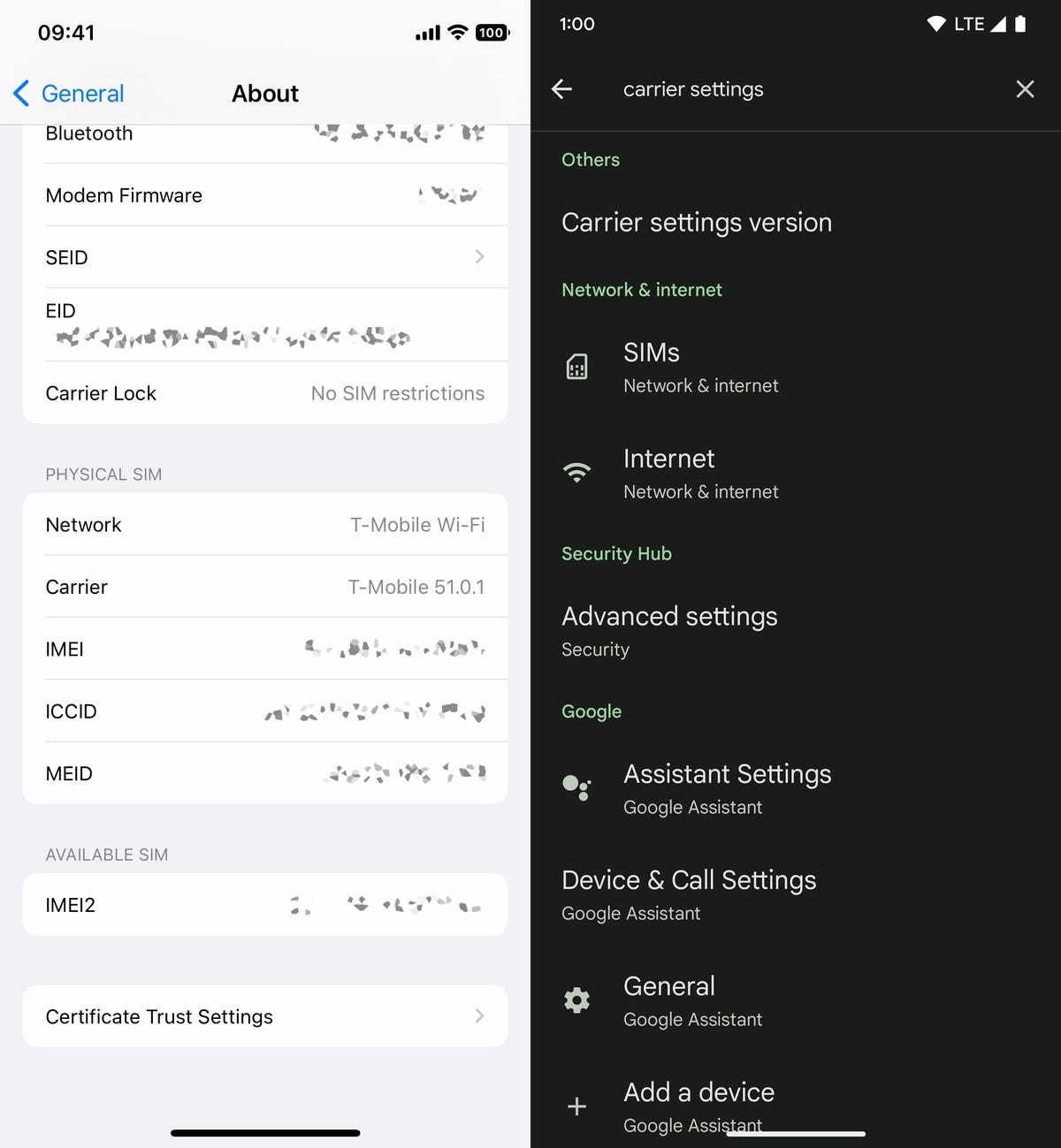
Left: iOS carrier settings. Right: Android carrier settings.
Reset your phone’s network settings
Sometimes all you need is a clean plan to fix a pesky connection problem. Refreshing your phone’s network settings is one way to do this. But beware, resetting your network settings will also reset any saved Wi-Fi passwords, VPN connections, and custom APN settings for those carriers that require additional configuration.
Android: In the Settings app, search for “reset” or more specifically “reset network settings” and tap the setting. On the Pixel, the setting is called Reset Wi-Fi, Cellular and Bluetooth. After resetting the network settings, don’t forget to reconnect your phone to your home and work Wi-Fi networks.
iPhone: Go to SETTINGS > Transfer or restore iPhone > recondition > Reset network settings. The next page will warn you that resetting network settings will reset your Wi-Fi, cellular data, and Bluetooth settings. touch Reset network settings and your phone will restart.
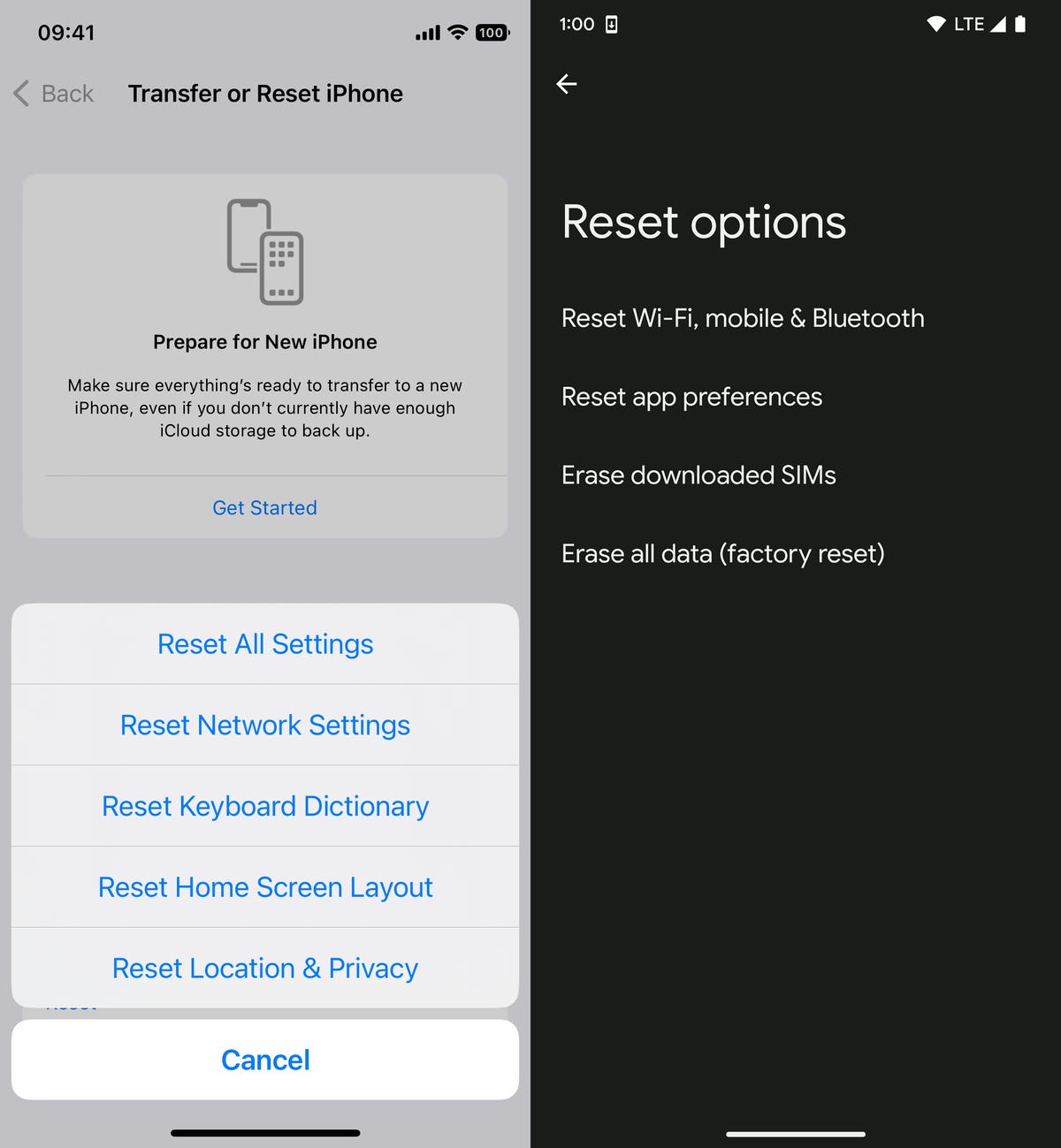
Resetting your network settings should be one of the last troubleshooting steps you try.
Contact your telephone operator
Sometimes unexpected signal problems can be traced to problems with your mobile operator. A cell tower may have fallen, or the tower’s fiber optic cable may have been cut, causing an outage.
For persistent problems connecting or staying connected to a mobile or data network, it’s possible that your mobile operator’s coverage doesn’t extend well in your area.
Other times, a new signal problem may be due to a fault with your phone or a damaged SIM card. Contacting your carrier to begin troubleshooting after trying these fixes is the next best step to solving your dirty signal.
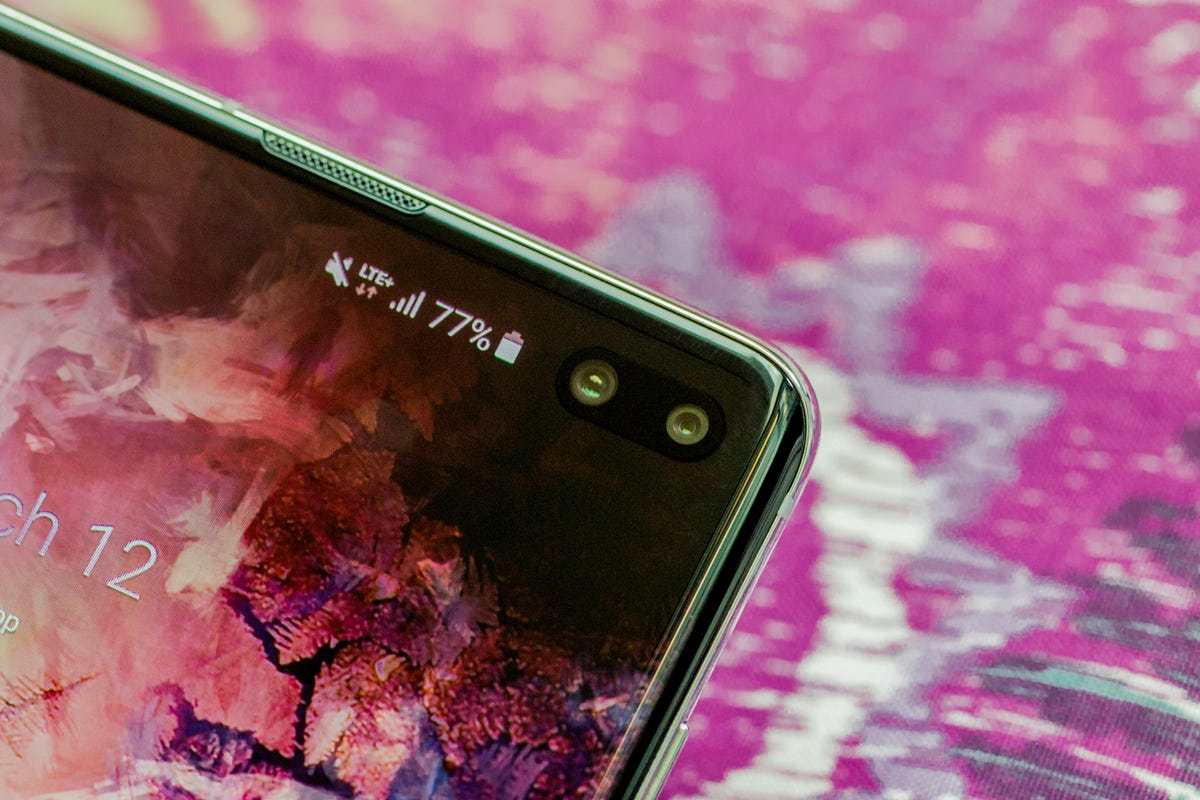
Sometimes contacting your carrier is the only way to resolve signal issues.
If all else fails, try a signal booster to improve cell reception
If after going through all of our troubleshooting steps, including talking to your carrier to review your options, you’re still struggling to get a good signal – try a booster. A signal booster takes the same cellular signal that your carrier uses and then amplifies it enough to provide coverage in a room or throughout your home.
The big disadvantage here is the cost. Wilson has three different amplifiers designed for home use, ranging in price $349 for single room coverage to $999 to cover your entire home. To be clear, we have not specifically tested these models. Wilson offers a 30-day money-back guarantee and a two-year warranty if you have any problems with its products.
I took over 600 photos with the iPhone 15 Pro and Pro Max. Check out my favorites
See all photos
If you’re looking for iPhone-specific tips and tricks, check out our guide to hidden features in iOS 17. For Android fans, stay updated on new features coming to Android 15.
